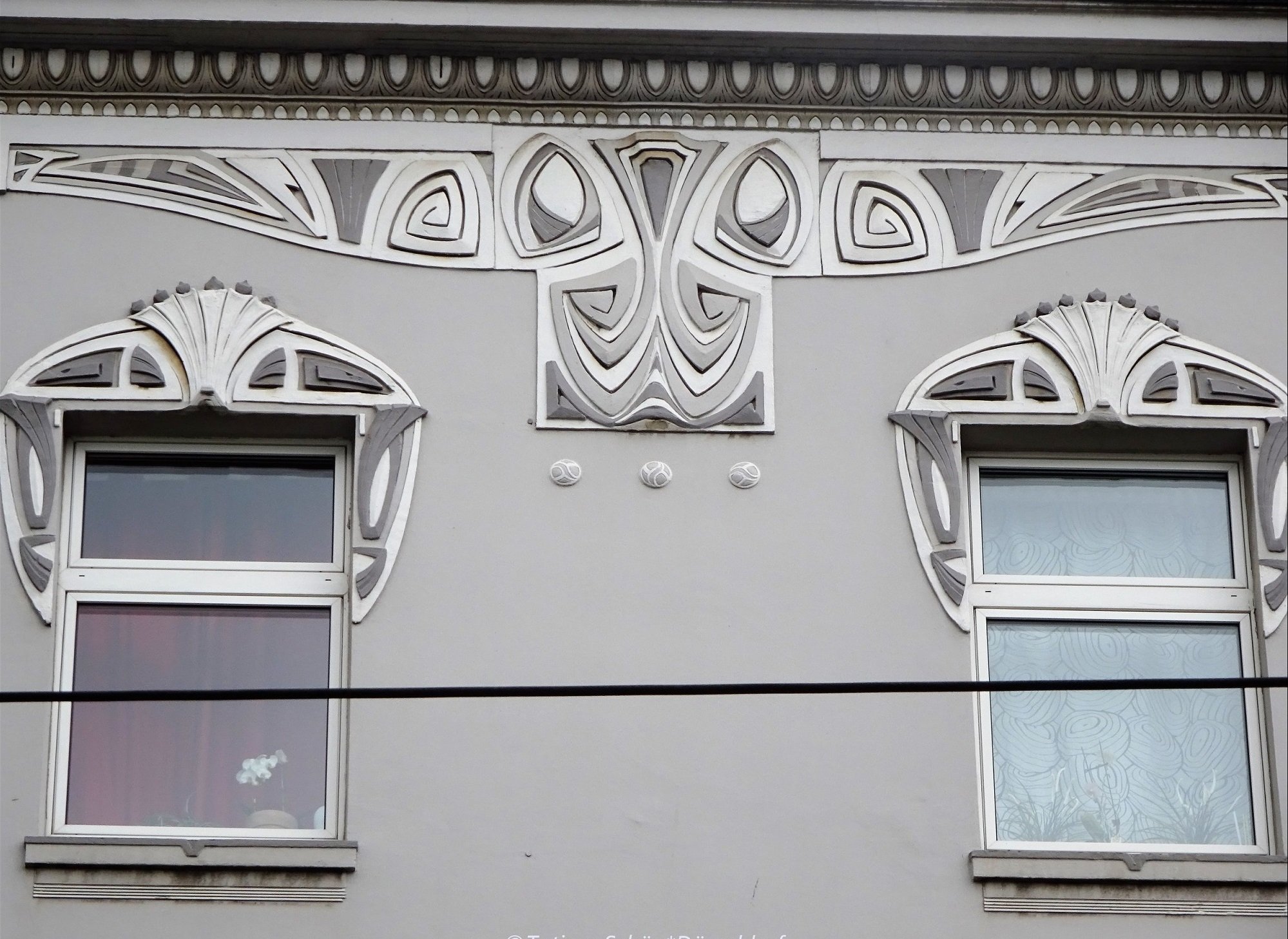#14296. Art Nouveau Facade with Decorative Window Frames and Geometric Ornamentation

The facade presented here showcases an excellent example of Art Nouveau from the early 20th century with its characteristic decorative elements. Particular attention is drawn to the exquisite window frames with symmetrical fan-shaped crowns that create a sense of lightness and elegance. The upper part of the facade is adorned with an ornamental frieze featuring a repeating geometric oval pattern, giving the building rhythm and cohesiveness.
The central composition between the windows represents a complex relief element with the flowing, organic lines characteristic of Art Nouveau. Note the three circular medallions beneath the central element—such details were typical for this style and often used as decorative accents. The light-colored plaster of the facade serves as a perfect background for the protruding white decorative elements, creating a subtle play of light and shadow.
When designing a modern facade, one can draw inspiration from such historical examples, adapting classical elements to contemporary materials and technologies. Symmetry, decorative window frames, and subtle relief details can be an excellent way to give individuality to a building without overwhelming it with excessive ornamentation.